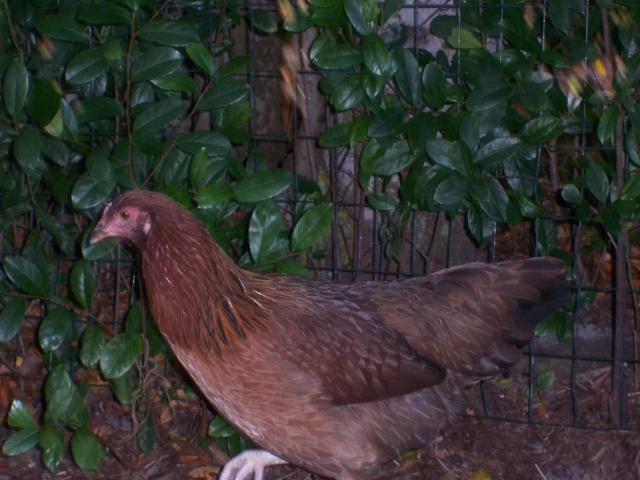Quote:
Greetings! Nope, if you're pullet is 20 wks old and red in the comb it means that she is coming into sexual maturity. Her comb should continue to increase with size as she prepares to come into lay in the next 4 or 5 weeks.
Chicken breeds vary when it comes to date at which they come into lay, but for most breeds, it's about 6 months. Certain breeds, such as Anconas, come into lay much earlier, but they are not the rule, rather the exception.
Another thing to consider is that, by having only 1 Dorking, you have no point of comparison. Remember that in every hatch there is great variance. It can not be overstated that all chickens are not created equal. Your particular pullet could turn out to be a poor producer. Indeed, this is a distinct possibility as there are poor producers in every batch; these are those that are meant to fill the freezer.
On a side note, Henderson's chart is dubious at best. Most of the data is old, and many of the breeds have morphed, altering the information, sometimes slightly, sometimes greatly. Some many of the characteristcs they impute to breeds in general are rather dependent on strain. Some of the information is strictly inaccurate. The information that is accurate is part of a body of knowledge generally held by poultry breeders. You'll notice that experienced poultry breeders never use the chart. For newcomers, I guess it's a convenient way to get some base information, but take everything with a grain of salt.
Greetings! Nope, if you're pullet is 20 wks old and red in the comb it means that she is coming into sexual maturity. Her comb should continue to increase with size as she prepares to come into lay in the next 4 or 5 weeks.
Chicken breeds vary when it comes to date at which they come into lay, but for most breeds, it's about 6 months. Certain breeds, such as Anconas, come into lay much earlier, but they are not the rule, rather the exception.
Another thing to consider is that, by having only 1 Dorking, you have no point of comparison. Remember that in every hatch there is great variance. It can not be overstated that all chickens are not created equal. Your particular pullet could turn out to be a poor producer. Indeed, this is a distinct possibility as there are poor producers in every batch; these are those that are meant to fill the freezer.
On a side note, Henderson's chart is dubious at best. Most of the data is old, and many of the breeds have morphed, altering the information, sometimes slightly, sometimes greatly. Some many of the characteristcs they impute to breeds in general are rather dependent on strain. Some of the information is strictly inaccurate. The information that is accurate is part of a body of knowledge generally held by poultry breeders. You'll notice that experienced poultry breeders never use the chart. For newcomers, I guess it's a convenient way to get some base information, but take everything with a grain of salt.




